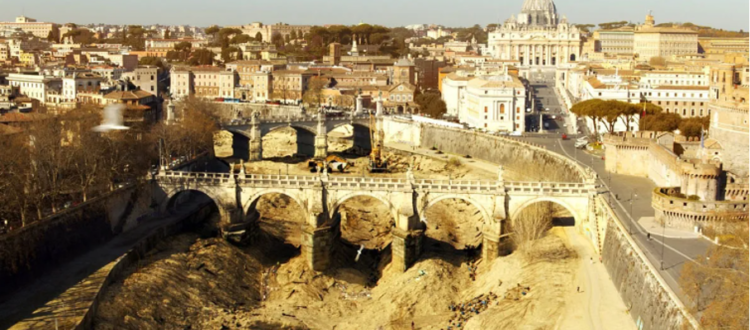DROUGHTS IN EUROPE BECOME MORE AND MORE FRIGHTENING
During the first months of 2023, Northern Italy and various regions in Europe are experiencing a period of severe drought that has continued since 2022. Since the beginning of this year, it has rained only five days in Milan. In February, only 10 mm of rain fell compared to the expected 85 mm. In January, on the other hand, rainfall was 65 mm and is in line with monthly averages. Unfortunately, this reassuring figure is only a small consolation. The Po Valley has been experiencing a disastrous drought situation for more than a year. The year 2022 ended with a rainfall deficit of 600 mm compared to the last decade. In all, 455 mm of rain fell in 2022, less than half the expected values (data from the Milan Linate Airport station). Northern Italy is not the only geographical area experiencing drought, the European Commission’s Global Drought Observatory recently published a report that well depicts the anomalous situation that other countries such as France, Spain and Germany are also experiencing.
But why isn’t it raining? The meteorological phenomenon that is causing the current lack of rain is an ‘omega’ blocking anticyclone that has been hovering over Western Europe for several weeks. A blocking anticyclone is a high-pressure system, in this case in the shape of an omega, which is very stable and tends to persist for a long time over a certain geographical area, bringing good weather. Blocking anticyclones are caused by strong ripples forming in the polar jet stream (winds blowing from west to east in both hemispheres for several thousand kilometres at about 10-12 km above the ground), which allow a low-pressure centre to be ‘isolated’ while colder, wetter currents flow around it. Unlike ‘classic’ anticyclones, omega blocks tend to be self-regenerating, which is why they persist over a given geographical area for several weeks. In addition to the lack of precipitation, these systems cause heat waves during the summer season, like the one experienced in Europe in the summer of 2003.
But if this is a pure meteorological phenomenon, we need not worry, right? Actually, although anticyclones are blocking meteorological phenomena, thus ‘short’ in duration and reversible, what we do need to take into account is their pattern (frequency and duration) over the past decades. A study recently published in Doklady Earth Sciences showed that over the period 1980-2018, the total (cumulative) duration of all blocking anticyclones persisting over the Northern Hemisphere during winter tripled: from 50 days in 1980 to 150 days in 2018. Furthermore, a team of NASA scientists observed that the number of drought events in Europe increased 6-fold between 2004 and 2021 (from an average of 3 annual events to 18 annual events).
The report released today by Copernicus ‘European State of the Climate 2022’ points out that 2022 was a year characterised by abnormally low rainfall conditions. In particular, during the winter it snowed up to 30 days less than the annual average in some areas and during the spring the entire continent experienced minimal levels of precipitation. The summer was no different, being considered the hottest and driest summer in 30 years. Climate change has made it possible for such intense events to occur on a 20-year frequency, when, without global warming, a summer like the past one may occur once every 400 years.
The scenario depicted by these studies seems to be the one reproduced in Paolo Virzì’s film ‘Drought’ released in cinemas last October, which presented Italian audiences with a not-too-improbable future scenario: lack of water, deserted cities, and worsening social divides. This situation makes careful and respectful management of the water resource, which must be properly used and remain an asset accessible to all, extremely necessary.
Article by Ilaria Crotti, Volunteer Italian Climate Network

